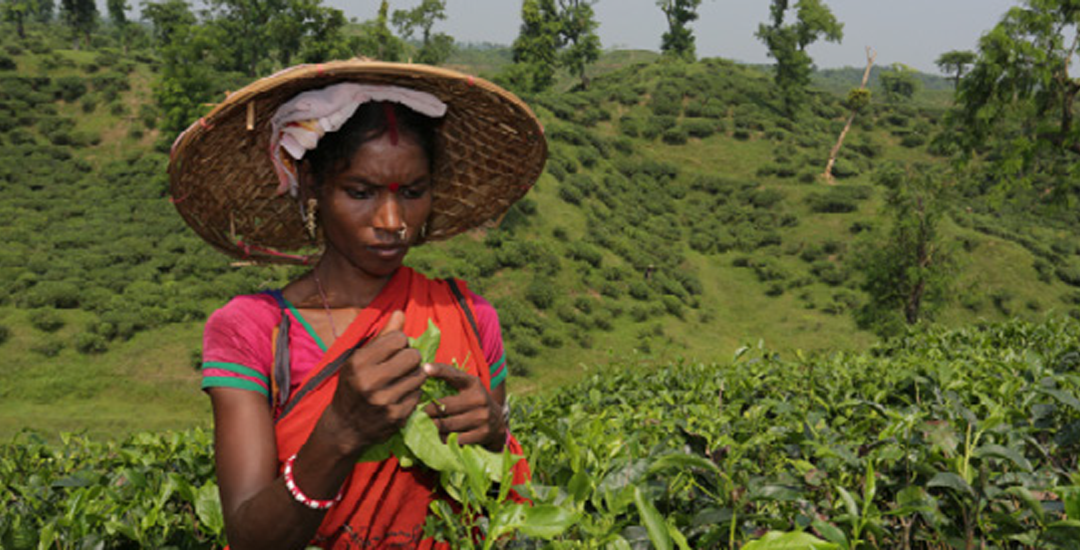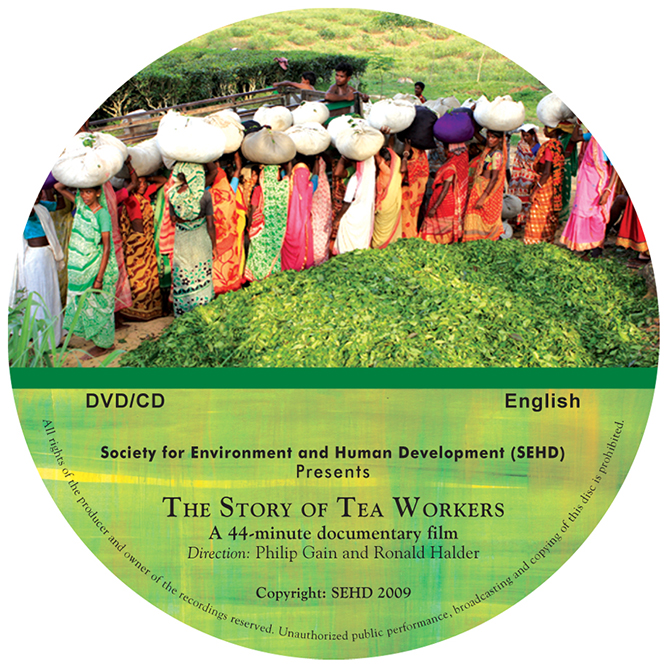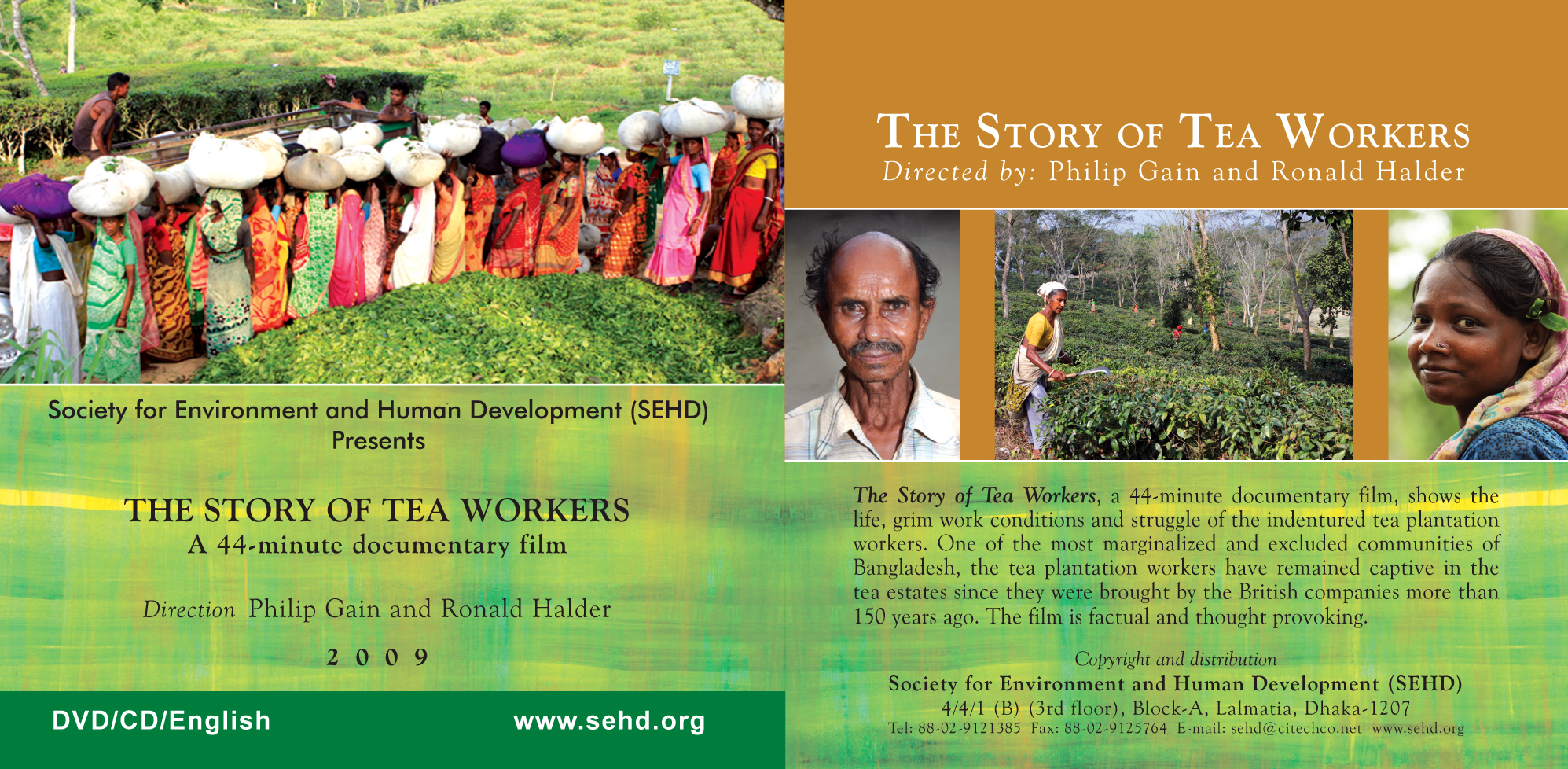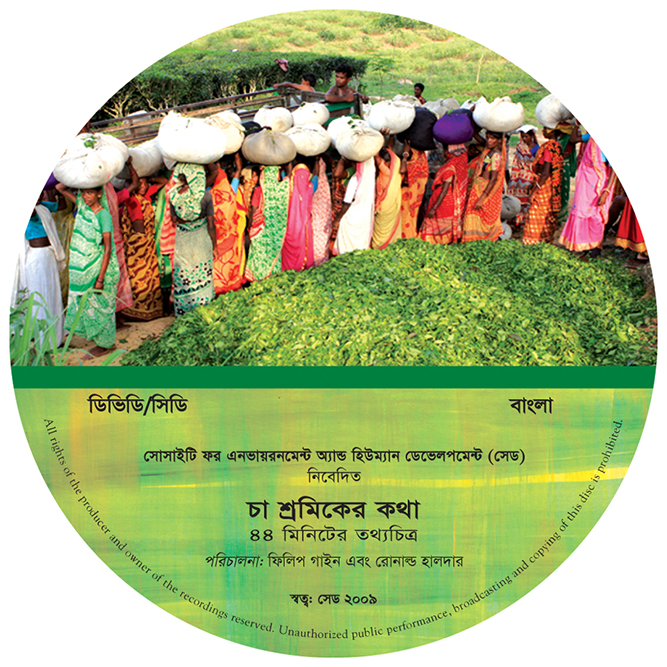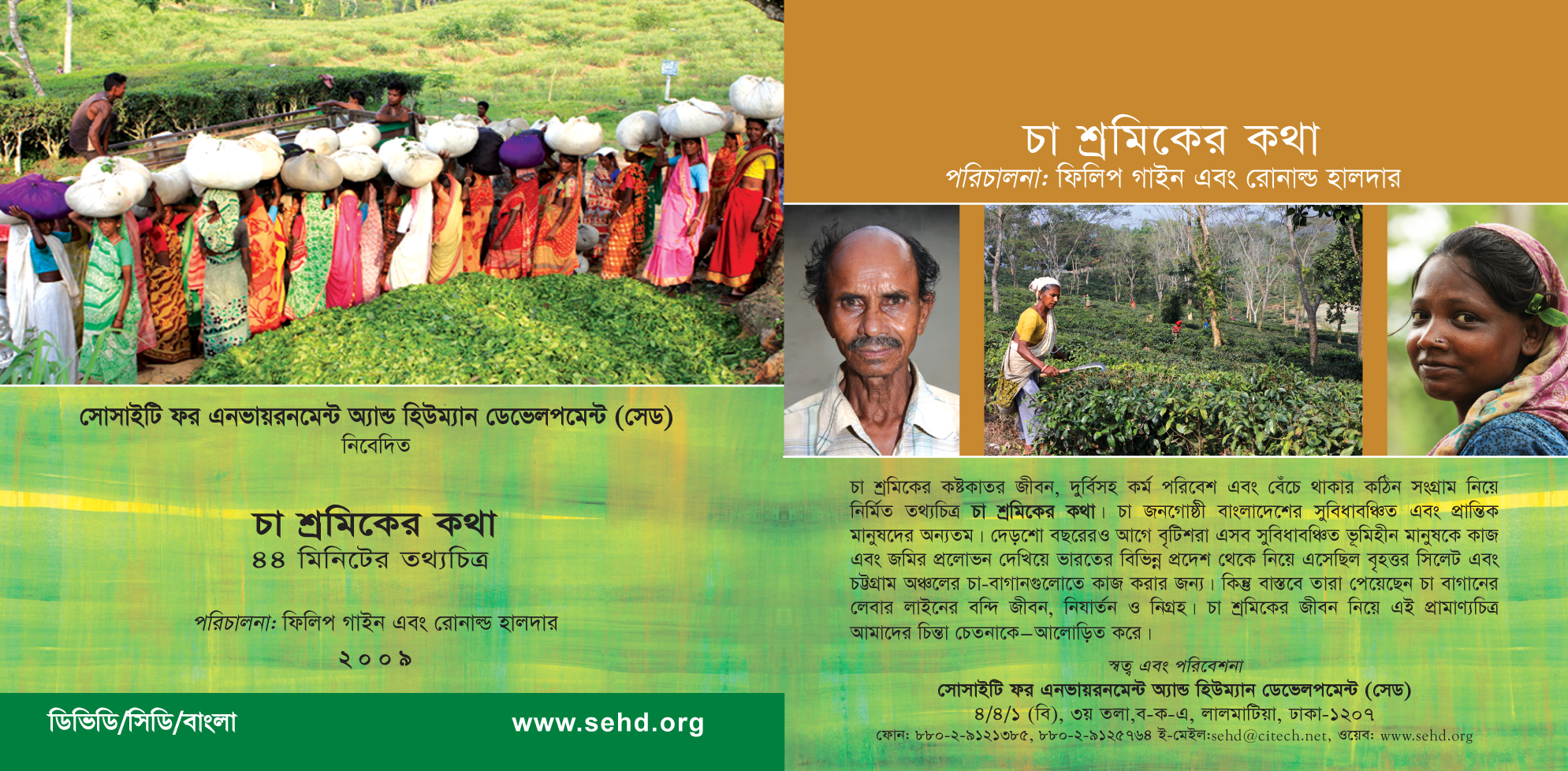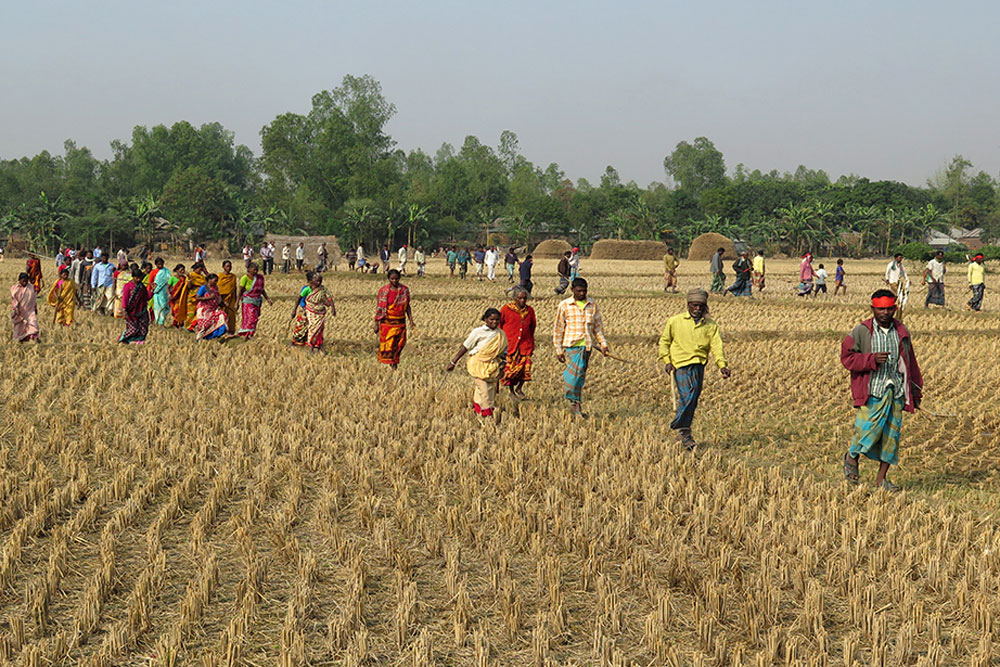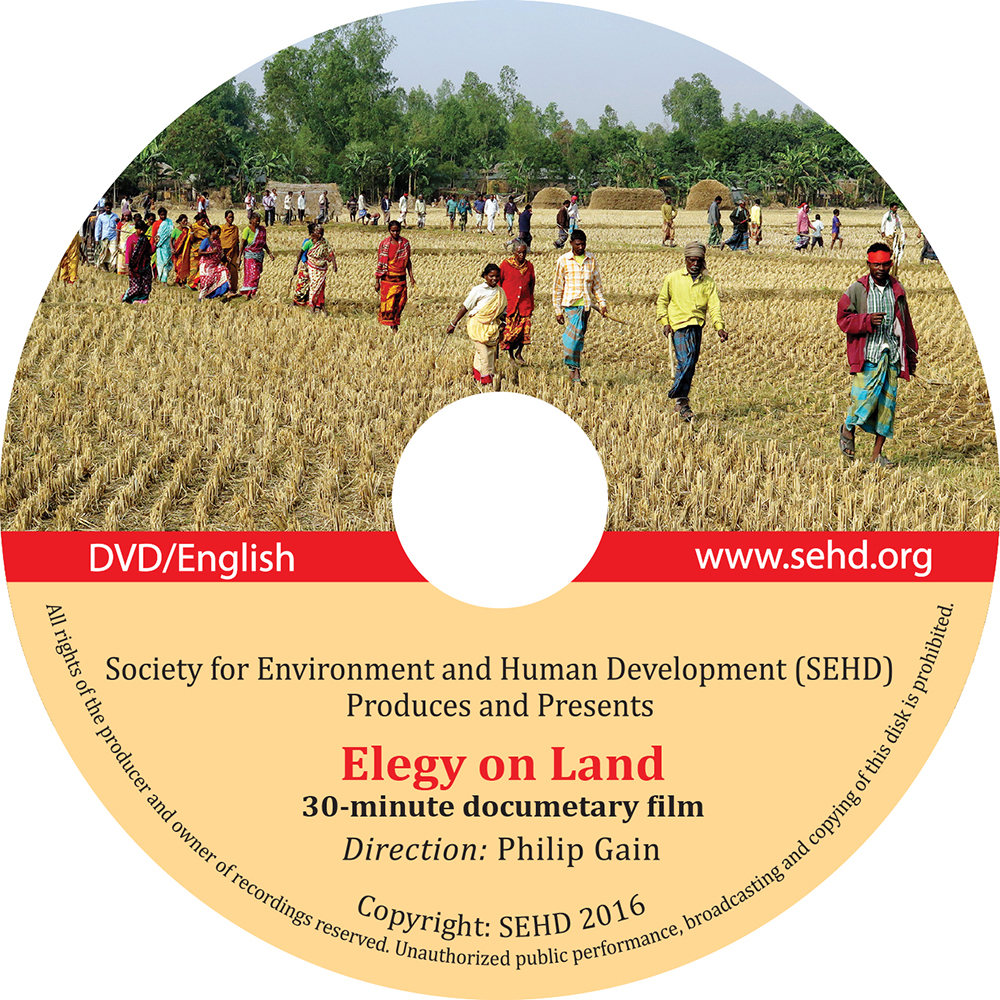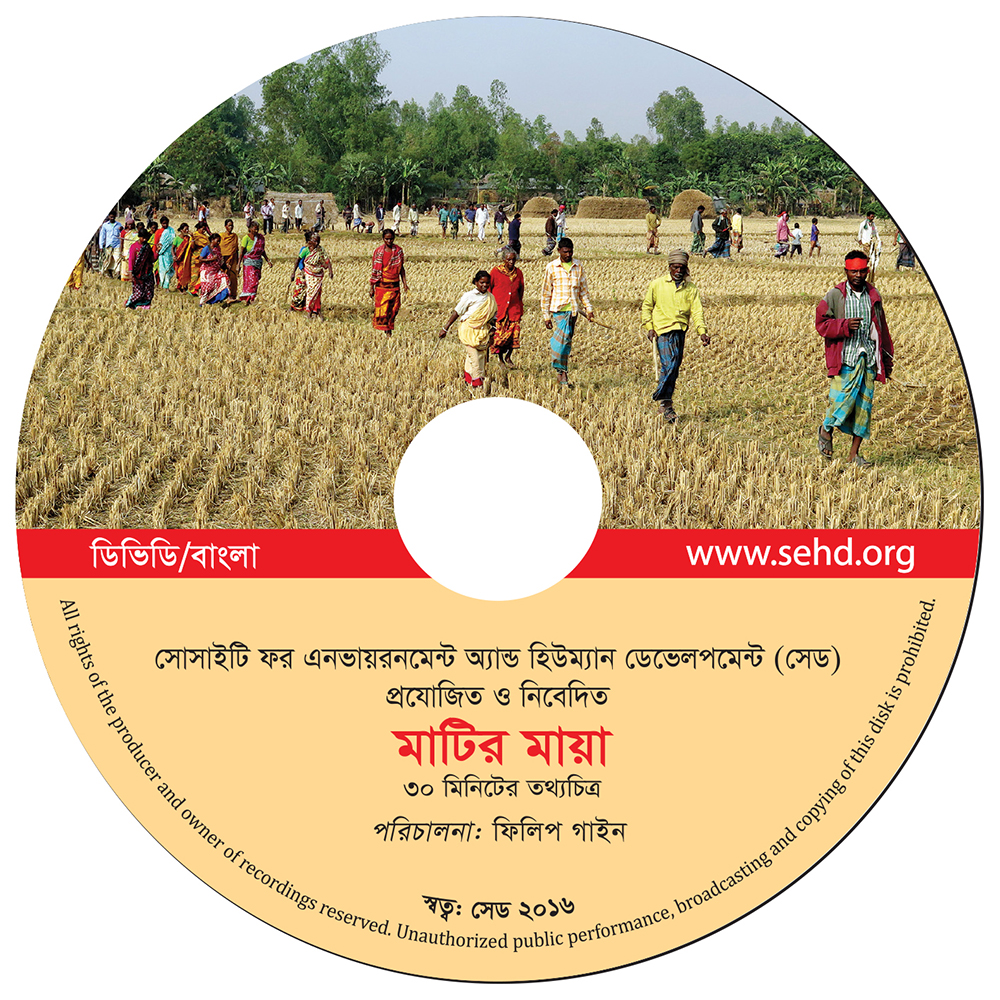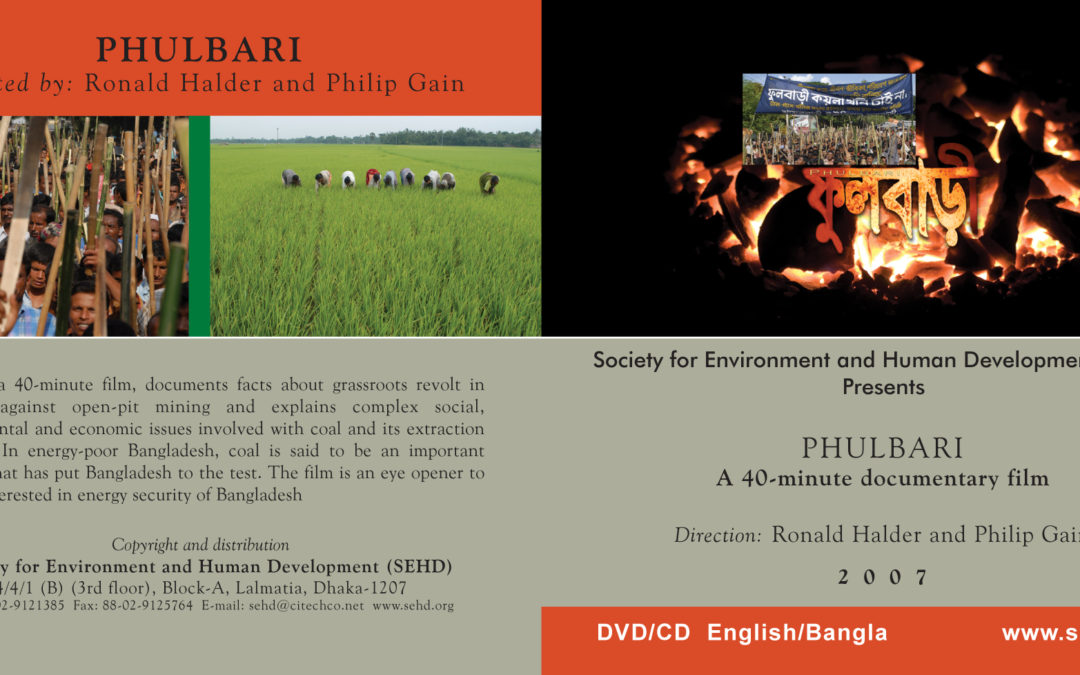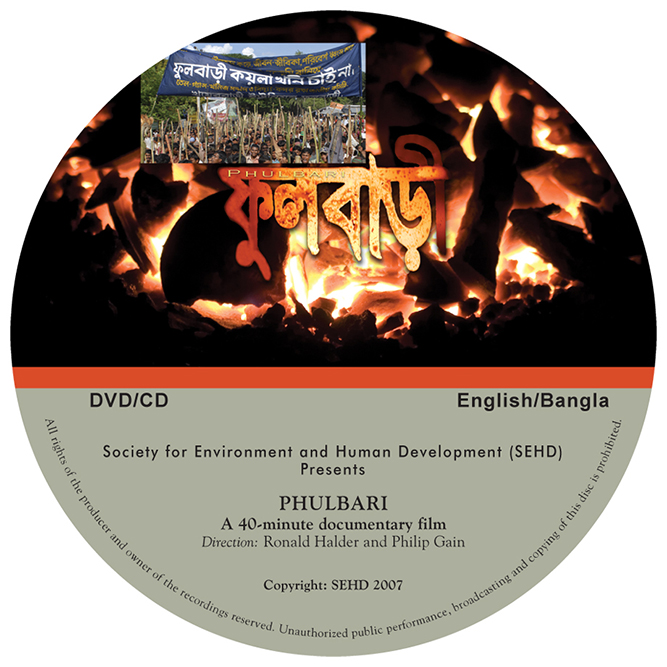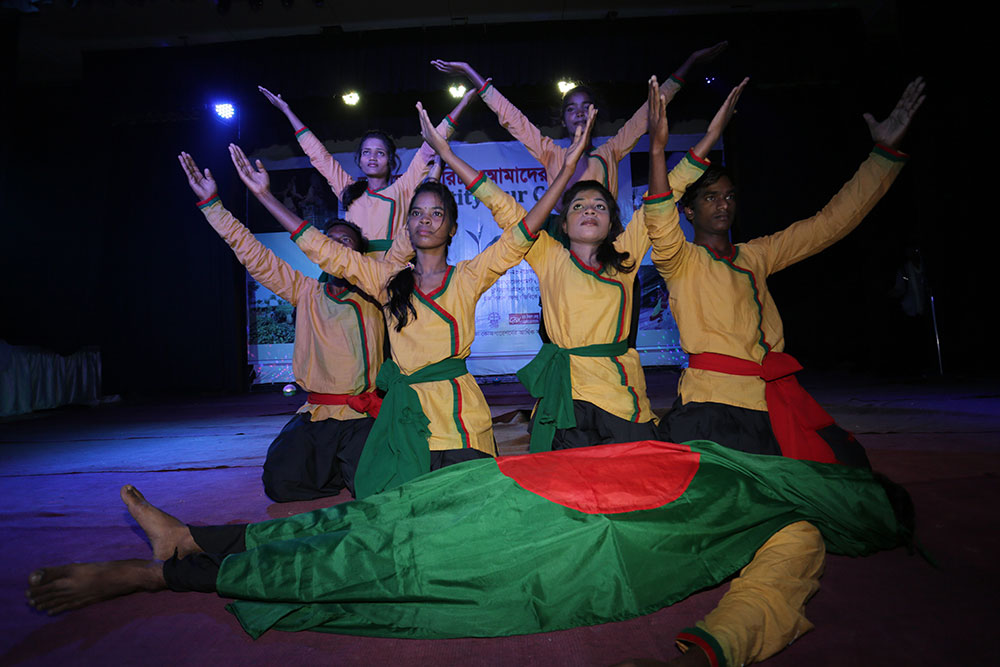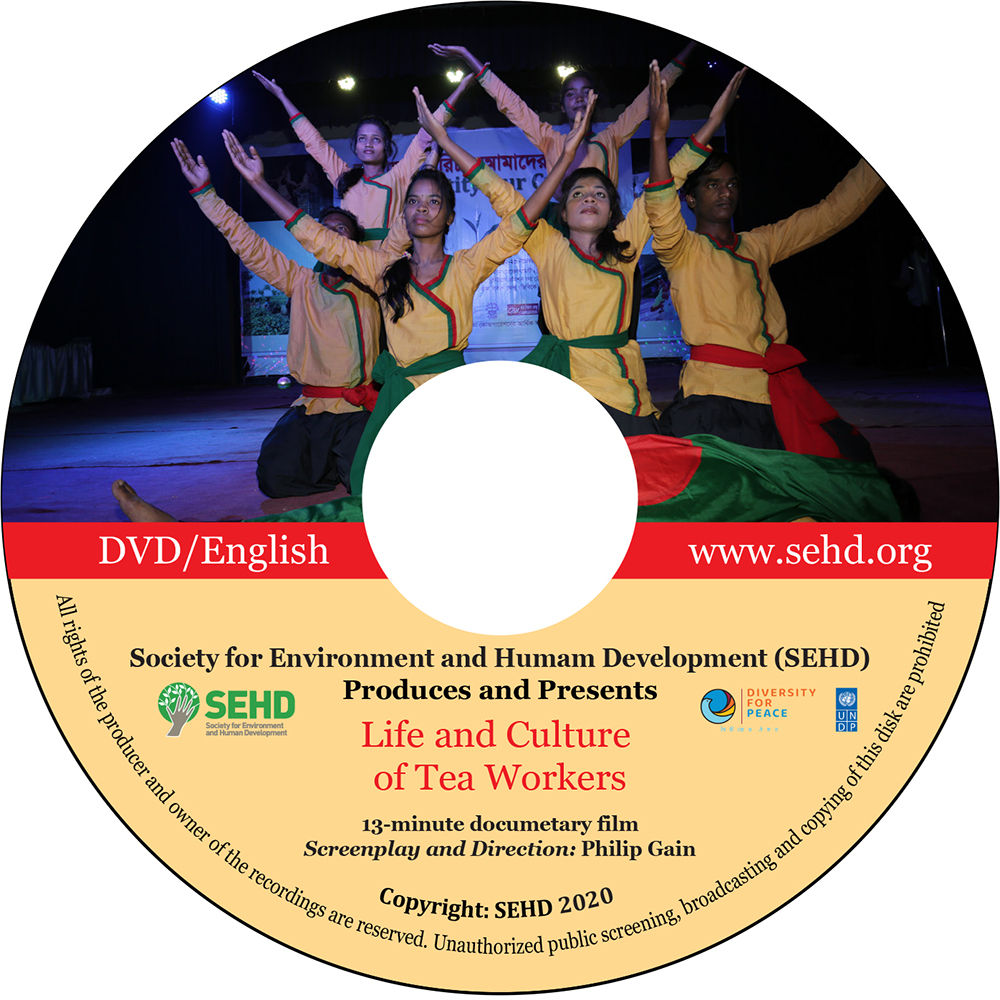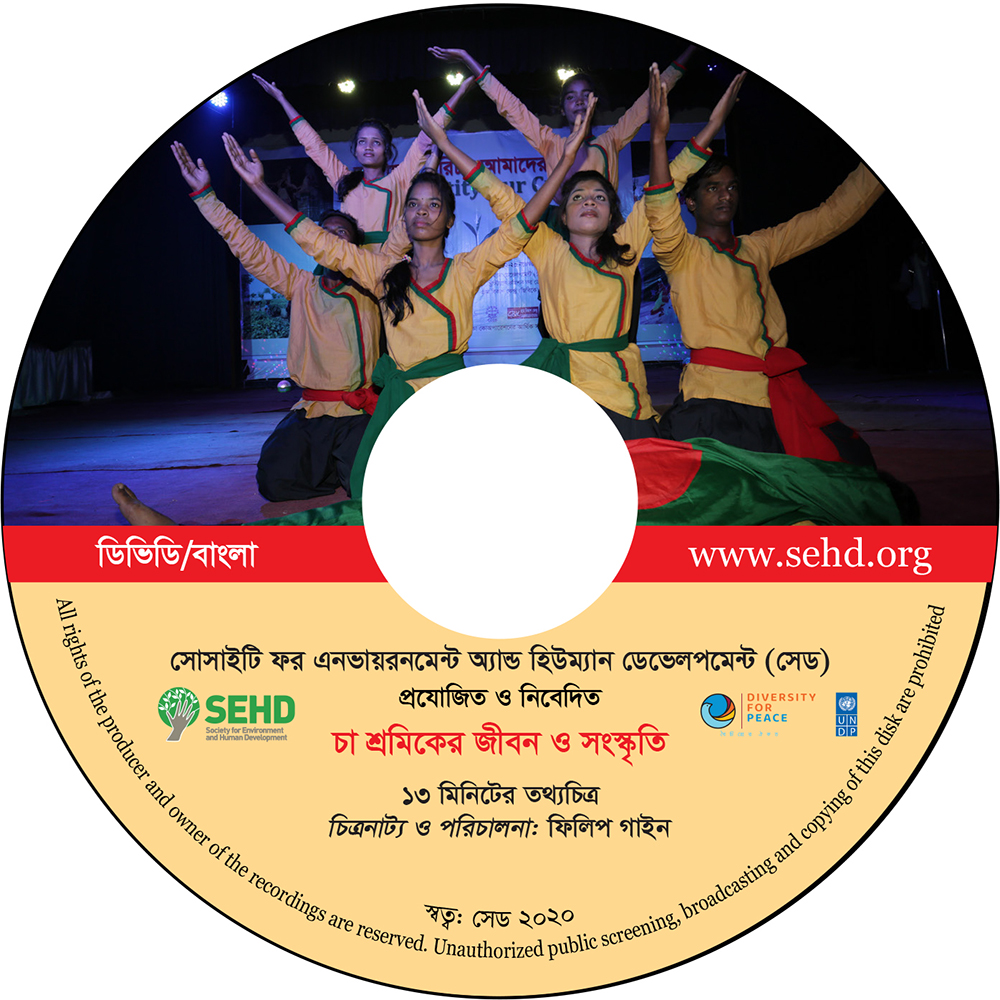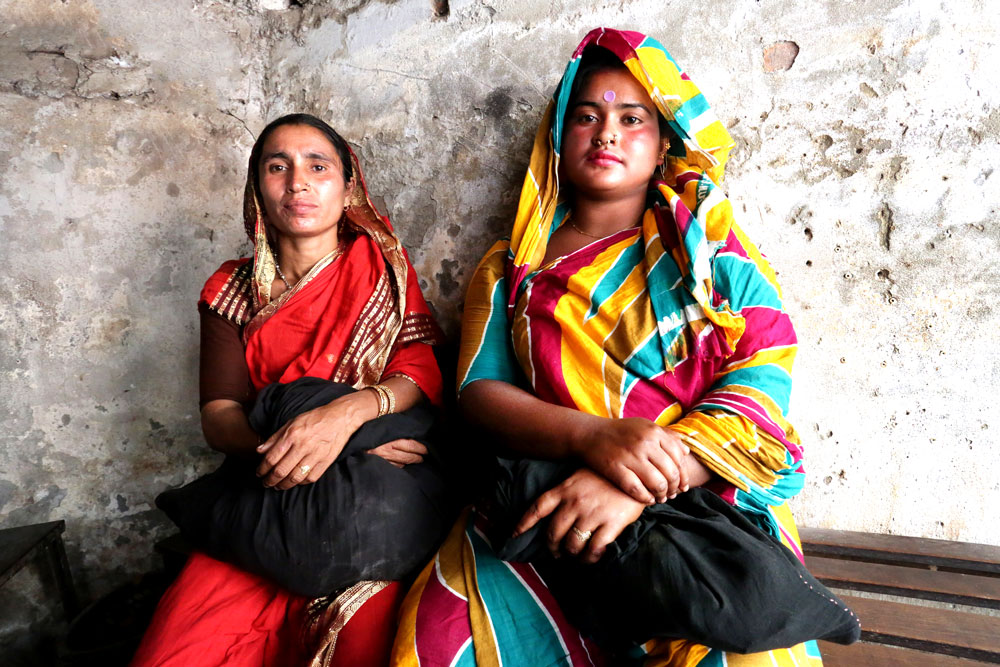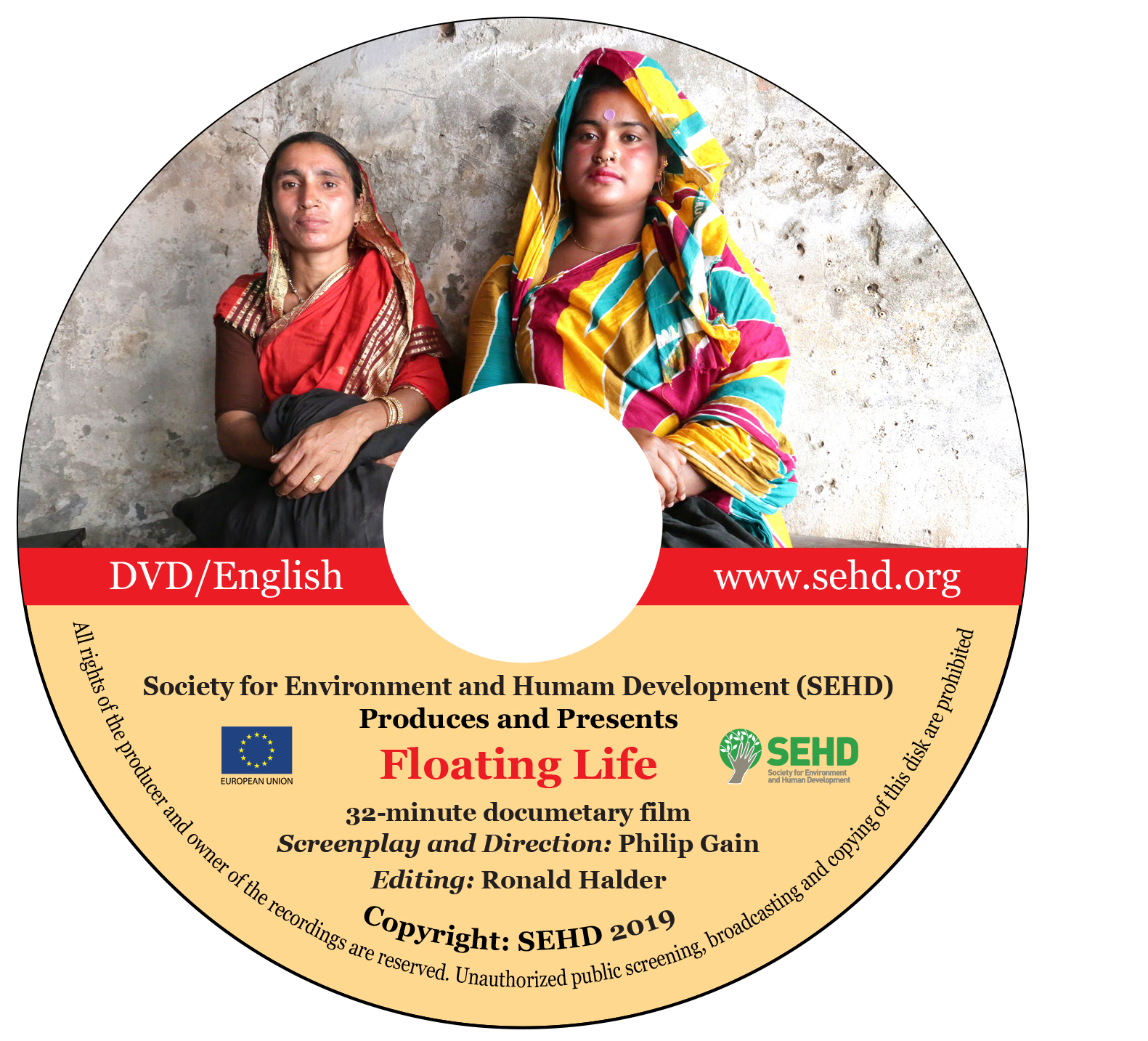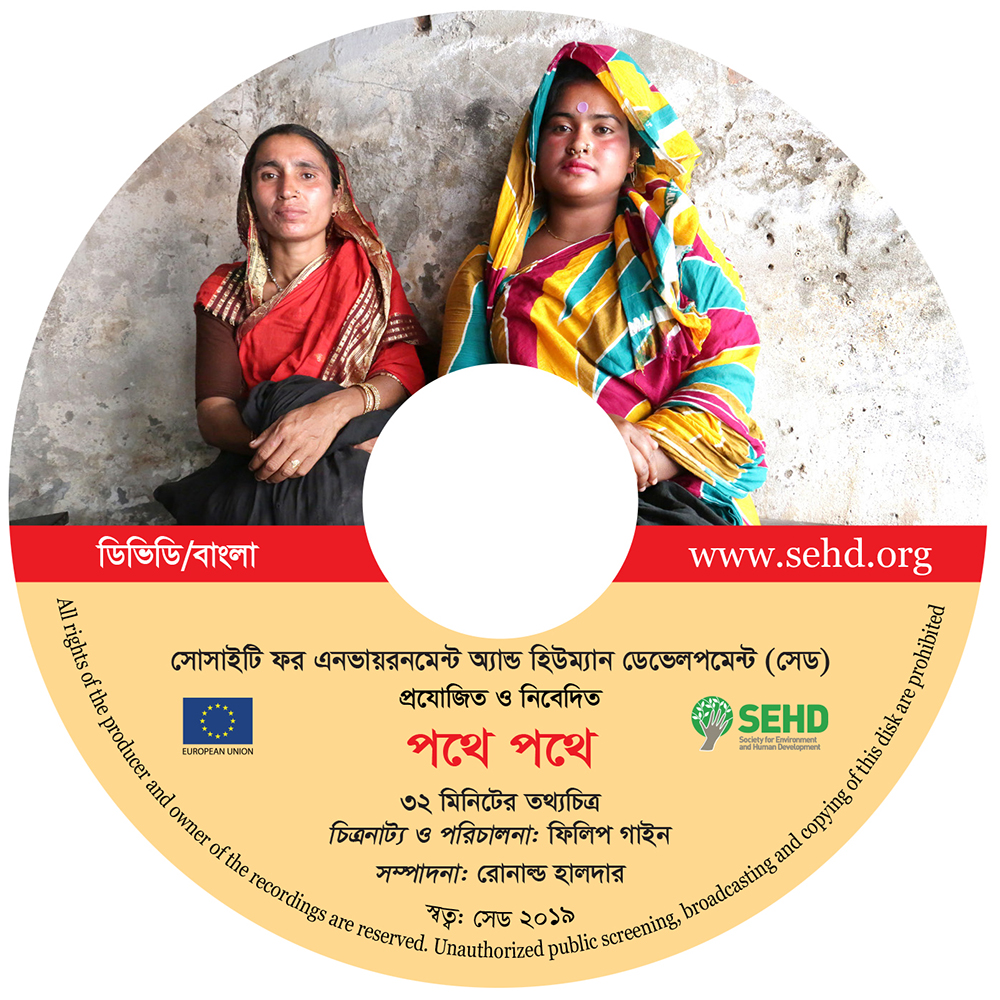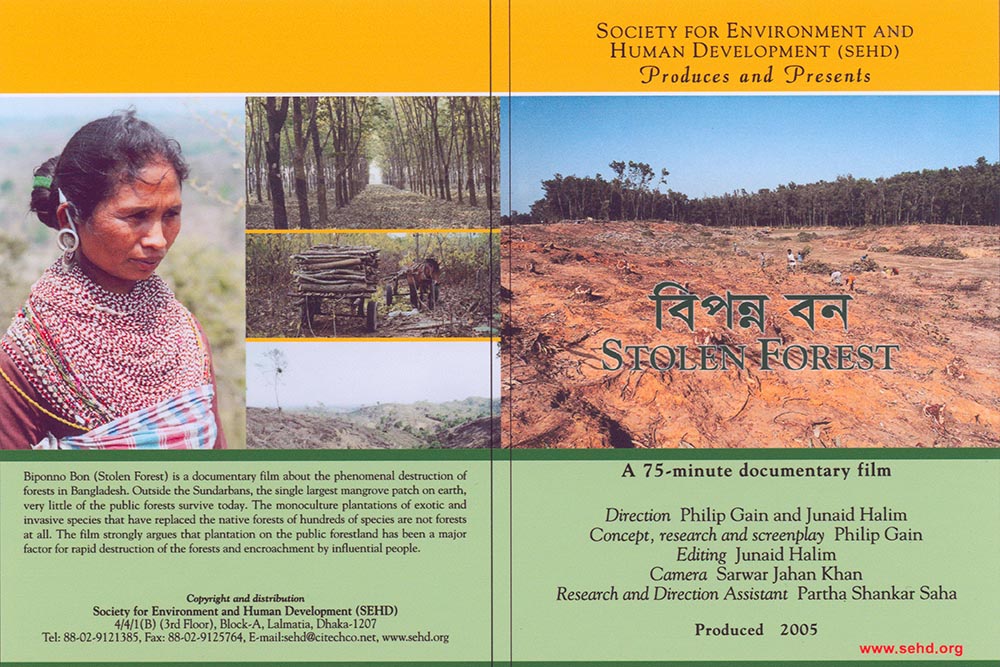
Stolen Forest
Biponno Bon (Stolen Forests)
Documentary film on destruction of forest (English 76 minutes and Bangla 45 Minutes)
Direction: Philip Gain and Junaid Halim
Screenplay: Philip Gain
Editing: Junaid Halim
Copyright: Society for Environment and Human Development (SEHD), 2005
A 76-minute documentary film on phenomenal destruction of forests of Bangladesh (except for the Sundarbans in the Southwestern districts). The first part of the film is on Modhupur sal forest and a few other sal patches in the north-center of Bangladesh that have witnessed severe destruction of forest primarily due to monouclture plantations of exotic species. The second part of the film is on the destruction of foerst in the Chittagong Hill Tracts (CHT). Most of the hills are bare today. Plantations of teak rubber and tobacco are some of the key factors for such destruciton. Be it in the sal forest or in the CHT what is obvious is that monoculture plantations of exotic and invasive species in place of hundreds of species of the native forests are not forests at all. One key message of the film is straight: man can plant forest but cannot create it.
চা শ্রমিকের কথা
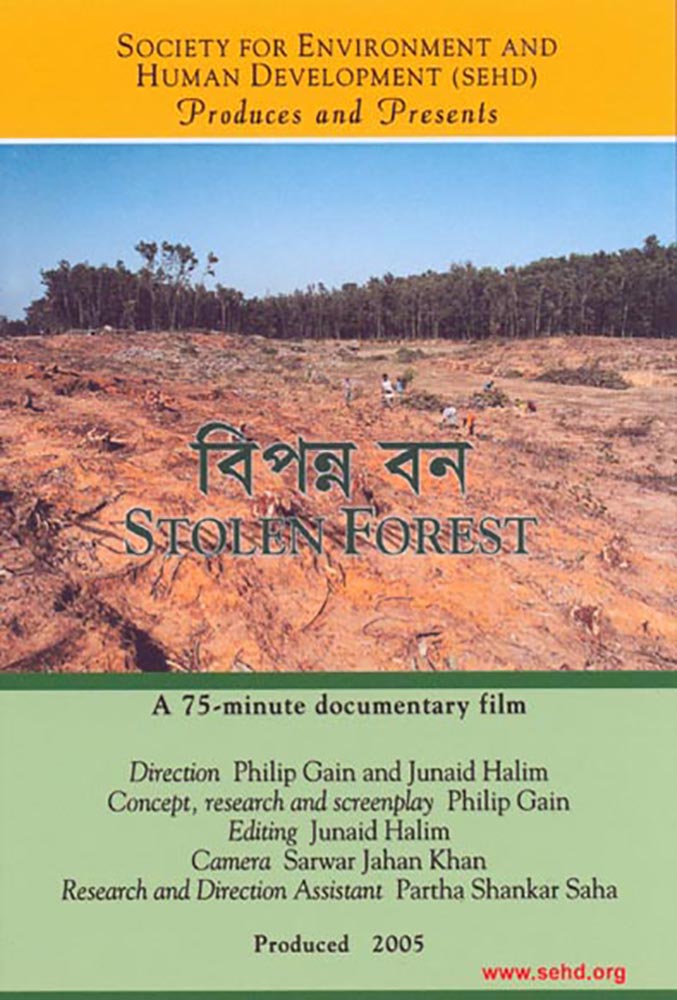
বন বিনাশের উপর প্রামাণ্যচিত্র (ইংরেজি ৭৬ মিনিট এবং বাংলা ৪৫ মিনিট)
পরিচালনা: ফিলিপ গাইন ও জুনাইদ হালিম
বিষয়, গবেষণা ও চিত্রনাট্য: ফিলিপ গাইন
সম্পাদনা: জুনাইদ হালিম
প্রযোজনা ও স্বত্ব: সোসাইটি ফর এনভায়রনমেন্ট অ্যান্ড হিউম্যান ডেভেলপমেন্ট (সেড), ২০০৫।
বিপন্ন বন’ সুন্দরবন বাদে বাংলাদেশের দক্ষিণ-পশ্চিমঞ্চলেদর জেলাগুলোতে নজিরবিহীন বনবিনাশ নিয়ে প্রমাণ্যচিত্র। প্রামাণ্যচিত্রের প্রথম অংশটিতে মধুপুর শাল বন এবং বাংলাদেশের উত্তর-মধ্যভাগের অন্যান্য কিছু শাল বন দেখানো হয়েছে যা মূলত বিদেশি প্রজাতির গাছের একক বনায়নের কারণে মারাত্মক বনবিনাশের সাক্ষী। প্রামাণ্যচিত্রটির দ্বিতীয় অংশ পার্বত্য চট্টগ্রামের বনবিনাশ নিয়ে। পার্বত্য চট্টগ্রামের বেশিরভাগ পাহাড়গুলোই আজ বৃক্ষশূন্য। সেগুন, রাবার এবং তামাক চাষ সেখানকার বনবিনাশের অন্যতম প্রধান কারণ। একটি বিষয় সুস্পষ্ট যে, শাল বন হোক অথবা পার্বত্য চট্টগ্রামের বনাঞ্চল হোক, আমাদের দেশের শত শত প্রজাতির প্রাকৃতিক বনে বিদেশি এবং আগ্রাসী প্রজাতির কৃত্রিম একক বনায়ন আসলে প্রকৃত বন নয়। প্রামাণ্যচিত্রের সুস্পষ্ট বার্তা: মানুষ গাছ লাগাতে পারে কিন্তু বন সৃষ্টি করতে পারে না।

